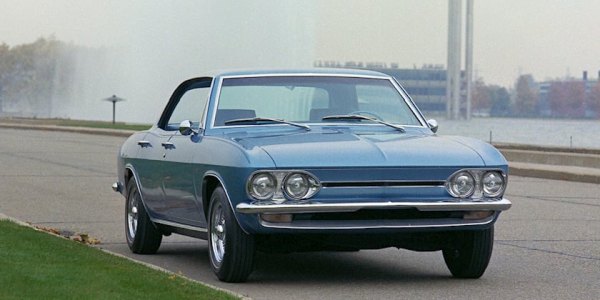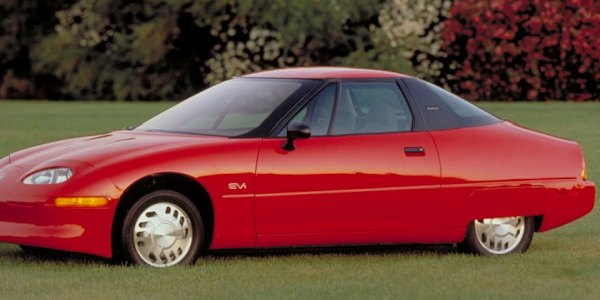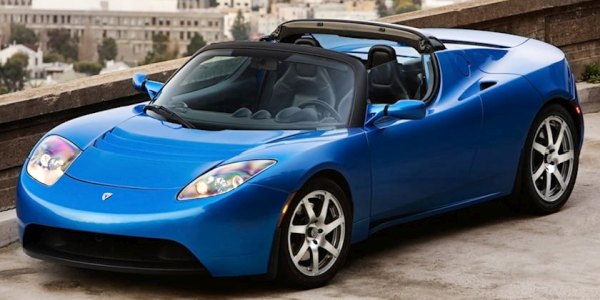Given the tone and validity of media coverage of electric vehicles in recent years, it’s tempting to imagine no one had considered them before and that Elon Musk had conjured the electric car from his bottom to save the world. The truth is that some of the first automobiles were powered by batteries, and EVs first became popular around the turn of the century, but it was the electric starter motor, together with the low cost of Ford’s Model T, that effectively killed the electric car for mass consumers. Automakers, on the other hand, have been constantly evaluating the practicality of modern technology for cars charging from the electric grid as a substitute for gasoline power. These are just a few examples that history should remember.
1941 Peugeot VLV

The Nazis canceled the Peugeot VLV, which is about the highest compliment a vehicle could receive. The small electric car was born out of need during the German occupation of France when automakers were forced to hand over their plants to the conquerors and the sale of fuel to people was prohibited. The French, on the other hand, did not take any of this lying down. People were inventive when it came to adapting their vehicles to run on acetylene or compressed gases obtained from the combustion of combustible materials. Some firms experimented with electric vehicles in secret, but Peugeot was the only large carmaker to do so. The car was designed in secret by the company’s engineers, who later sold it openly.
The VLV (Voiture Légère de Ville, or Light City Car) had a narrower rear track than the front, eliminating the need for a differential. It ran on four 12-volt batteries, had a range of roughly 50 miles, and a top speed of 22 mph. The occupying Nazi regime was not thrilled, and it was outlawed after only 377 were constructed.
1966 Chevrolet Electrovair II

In the 1960s, GM was seriously considering electric vehicles, and the lightweight rear-engined Corsair seemed ready for conversion. The second Electrovair concept placed the electric motor in the back and was powered by a 532-volt silver-oxide battery array situated above the rear motor from the front of the automobile. The Electrovair II had a range of 40-80 miles and comparable performance to the gasoline-powered vehicle. Unfortunately, while the silver-oxide battery array was power-dense, it degraded quickly, with the batteries lasting just about 100 charges.
2016 Chevy Colorado Transmission Problems
1972 BMW 1602e

The first public demonstration of BMW’s entrance into electric automobiles took place at the 1972 Munich Olympic Games. Unfortunately, those games are remembered more for a terrorist attack on Israeli Olympic team members by a Palestinian militant group. If it hadn’t been for the tragedy, more people would remember the orange electric BMW 1602 concept cars that were utilized to promote marathon and long-distance walking events. The 1602e had a range of 43 miles at a constant 31 mph, almost three times faster than a professional marathon runner’s pace, utilizing a dozen 12-volt lead-acid automobile batteries.
The 1602e isn’t particularly outstanding in today’s perspective. It was more of a proof of concept, with batteries weighing a whopping 772 pounds and a 60 mph time of nine seconds. It would, however, continue to accelerate to 115 mph.
1947 Tama Electric Car

Nissan’s Tama Electric Car number 0009 is as cute as a start button and is part of the company’s historical collection. Tama was a brand name under the Tokyo Electro Automobile Company, which became Prince Motors, Ltd, which amalgamated with Nissan before becoming Nissan. Following World War II, Japan was damaged and faced a lack of energy, food, and goods in general in 1947. Electrical power was plentiful because there were few home appliances or large-scale electricity users. As a result, there was a slew of electric car start-ups, and they were popular until gasoline regained its viability as a fuel. The Tama Electric Car, with its 4.5 horsepower, was a four-seater that was frequently used as a taxi until 1951. A truck variant was also offered. It was as light as a Mazda MX-5 Miata and had a range of 40 miles, though it was reported to go up to 60. A lead-acid battery and a top speed of only 22 mph were the drawbacks (17 if you want maximum range).
1996 GM EV1

In the late 1990s, General Motors (GM) had the opportunity to lead the way towards electric vehicles but instead claimed it would be an unprofitable niche, crushing all but 40 of the cars it made and leased out. The first iteration, which had a range of 60-100 miles with 660 units produced, used lead batteries. The second version, which ran from 1999 to 2003, included a nickel-metal hydride battery pack, among other changes. GM produced 457 of them for lease, with a range of 100-140 miles. The recall and crushing of the cars are still up for debate, and only a few of the forty cars shipped to universities and museums have made it out alive. In reality, just a few have survived, making the EV1 one of the most sought-after 1990s vehicles. Customers adored the EV1, which had a realistic range for many applications and was developed at great expense by GM. GM had the potential to lead the electric revolution but, whether intentionally or not, dropped the ball, allowing Tesla to take the lead.
2005 Tesla Roadster

Martin Eberhard and Marc Tarpenning launched Tesla in 2003, and the Lotus-based Roadster was the company’s debut automobile. It was the world’s first production electric vehicle using lithium-ion batteries that could travel 200 miles on a single charge. It also reached 60 mph in 3.7 seconds, and 2,450 units were sold. The 2005 Tesla Roadster wasn’t without flaws, but it was the proof of concept that the all-electric automobile required to change the direction of automotive history.
The Roadster, on the other hand, was more of a proof of concept than a Tesla product. It was basically the same chassis as the Lotus Elise underneath the skin, thinly disguised and with a different powerplant.
